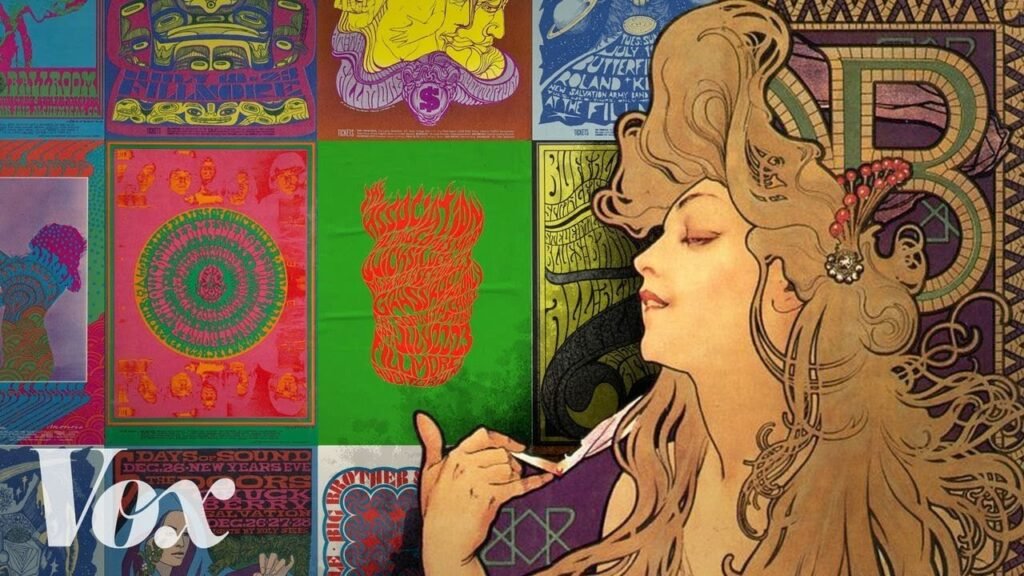
Introduction
In no way can the cultural impact of psychedelics in the 1960s be denied. Indeed, psychedelics also affected the counterculture movement and also art, music, literature, and even fashion. The use of LSD and other hallucinogens was somehow considered a quest for challenging societal norms, questioning alternative realities, etc. In embracing psychedelics, individuals wanted to break away from mainstream culture. This brought changes in attitudes about spirituality, social norms, and self-expression that left long-term impressions on society.
In addition, psychedelic use in therapy has recently been explored for the treatment of mental illnesses, such as depression and anxiety disorders. The clinical trials that have been conducted recently found that a significant number of patients were improved mentally when they received psychedelics under controlled environments.
As per History Channel, Timothy Leary coined the phrase “Turn On, Tune In, Drop Out,” which was associated with the counterculture movements of that time.
Psychedelic cultural impact continues today as people have used some of its therapeutic benefits to add to overall human well-being despite the ethical concerns it carries.
The 60s: a time when LSD was more popular than TikTok and tie-dye was the only fashion statement worth making.
Historical Context of Psychedelics in the 1960s
The 1960s was a time of great cultural change that included the rise of psychedelics. This new phenomenon dominated popular culture through music, art, and film. It had both social and worldwide implications; it opened channels for speaking about social disparities and other changes in the political order. Psychedelics caused an altered state of consciousness or transcendence that became the heart of hippie movement ideologies. These were helping incite different modes of thinking through challenging orthodox values. The impact of psychedelics on culture is still seen to this day, and some artists and activists strive to continue pushing for that same revolution.
Psychedelic use became widespread among musicians, such as Jimi Hendrix and The Beatles, who were inspired by the novel sounds and effects. The trend also spread to religious settings such as the Native American Church’s peyote ceremonies or Rastafari ritual usage. Simultaneously, drug legislation policies reflected social values by outlawing LSD in most Western countries after being experimented with in academia.
In many ways, this countercultural moment culminated into a sociopolitical movement against mainstream beliefs on war, consumerism, and race relations-all while promoting environmentalism, human rights activism, and unity towards a greater social purpose. The psychedelic experience induced heightened empathy where differences seemed less important than broader collective identity: “We are all one.
Since then, one of the alternative therapy options has been Integrative Medicine, which encompasses practices that combine alternative therapies with conventional Western medicine; it can include mindfulness training such as meditation or acupuncture for pain relief. Such practices have shown benefits in the treatment of depression, PTSD (Post-traumatic stress disorder), and anxiety symptoms, among others, because they can deepen emotional intelligence or enhance emotional regulation capabilities.
The counterculture movement may have risen on the wings of psychedelics, but it was crash-landing on the reality of Nixon’s America.
The Rise of the Counterculture Movement
A subculture was born due to the rise of a movement characterized by unconventional lifestyles, social norms and values, and the rejection of mainstream culture. The subculture was primarily driven by the increased use of psychedelic substances during the 60s and its advocacy for alternative ways of living. These substances catalyzed a change in individual perceptions and resulted in the creation of new art forms, music genres, fashion styles, and political movements.
The counterculture movement grew strongly with the use of psychedelics, focusing mainly on ideas such as communal living, anti-war feelings, free love ideas, and environmental conservation. Individuals used psychedelics, especially LSD, which fostered the development of most of these ideas since one challenged societal norms and values using psychedelics. Mostly, people of different races got together and shared one common idea.
This community encouraged creative expressions that questioned the traditional approach to artistic expression. Psychedelic art included bright colors and complex designs meant to mirror the effects of hallucinogenic drugs. Music shows were characterized by sound systems that were turned up loud and light shows meant to heighten sensory perception among the users.
Pro Tip: While psychedelics were very instrumental in the formation of counterculture ideologies during the 60s, their use has always been controversial since they have psychological disturbances when used recklessly or excessively.
Psychedelics in the 60s: When Woodstock was less about music and more about seeing rainbow unicorns.
The Cultural Significance of Psychedelics in the 1960s
Psychedelics played a critical role in shaping the cultural landscape of the 1960s. Their influence was reflected in the different aspects such as art, music, and literature. Psychedelics helped introduce new ways of artistic expression, characterized by bright colors and abstract imagery. The musicians, for example, The Beatles, included psychedelic elements in their music and clothing styles to freely express themselves. Literature also saw a drastic change with authors like Ken Kesey and Hunter S. Thompson experimenting with new literary possibilities through psychedelics. Overall, psychedelics opened up new avenues for creative exploration and personal empowerment during this era.
Reading about psychedelics was the closest thing to tripping for those too scared to try it themselves.
The Publication of Psychedelic Literature
Psychedelic literature was significant in the 1960s cultural revolution. Many enthusiasts of counterculture found interest in literary productions that depicted psychedelic experiences. They were also very influential on the attitudes of society as a whole. Some of the books published during the time went on to attain cult status, such as Timothy Leary’s The Psychedelic Experience and Ken Kesey’s One Flew Over the Cuckoo’s Nest. The books inspired youths on ideas not conventionally supported, paving the way for further intellectual subcultures.
Psychedelic literature marked a significant departure from the traditional forms of storytelling. The authors experimented with thematic and linguistic structures language to capture what were considered new ways of perception opened up by hallucinogenic substances such as LSD, DMT, psilocybin, mescaline, and others. Characters confronted psychological experiences that conveyed unique insight into existential questions beyond the constraints of conventional narratives.
Moreover, this type of literature created an unprecedented dialogue between users and non-users alike; it allowed previously taboo discussions on spirituality, sexuality, mental health issues, drug use, and politics in public discourse.
For instance, mid-century writer Aldous Huxley had a terminally ill wife when he first tried LSD-25 but found relief through his experience with the substance. In “The Doors of Perception,” Huxley describes how psychedelics led him to experiences that, after every use, brought new insights into the world of art and human beings, letting him overcome his personal strife without a sweat. Overall, Psychedelic literature played a fundamental role in shaping contemporary society’s attitudes towards non-conventional states of consciousness exploration despite its negativity laden in some reports due to its influence on counterculture movements around protests against war policies.
Who knew a few mind-bending mushrooms could land you in jail quicker than a bank robber?
The Criminalization of Psychedelics
Prohibition of psychedelic substances has led to a huge impact on the culture and society, as it forced their use underground. This was partly due to negative propaganda initiated by authorities, which linked them to anti-social behavior and mental health issues. Due to this, they fell under Schedule I of the Controlled Substances Act in 1970.
This criminalization had a far-reaching impact in terms of halting scientific research and boosting an illegal market for such drugs, which further contributed to contribute towards public misapprehension and misinformation on their effects. The stigma associated with psychedelics and its users remains in place to date. At the same time, now researchers conduct scientific studies that could have been explored if there had been research in the decades that followed the initial discovery.
It is important to undergo reform policies toward decriminalization as well as investing more highly in research related to psychedelics’ medicinal properties that can help treat psychological pain points such as addiction treatment or PTSD therapy. Education programs promoting responsible & happy consumption for legal users and destigmatizing psychonauts who are soberly using for spiritual/personal enlightenment can bring balance back into our society, creating happier people harnessed with the power of psychedelic medicine.
However, still, hippies could operate enough to give birth to the modern-day tech industry – thank Lucy in the Sky with Diamonds for your iPhone.
Conclusion
Exploring the impact of psychedelics in the 1960s reveals a cultural tipping point. The popularity of these substances led to increased experimentation and openness in areas like spirituality, music, and art. The psychedelic movement was integral in shaping counter-culture, anti-war protests, and political dissent. Through this lens, it’s apparent that society can undergo significant transformations from the widespread use of mind-altering substances.
This is apparent in the lasting images, like the trippy album art of Pink Floyd or the counterculture fashion choices present at Woodstock. These hallmarks of pop culture are somewhat trivial but reflect a broader theme. LSD allowed artists and musicians to express themselves beyond societal norms by creating works that play with reality and perception.
Hence, drugs have had an impact on social trends throughout history, but maybe the psychedelic era has been one of the most influential periods in modern times because of the widespread movements in counterculture inspired by it.
Pro Tip: Be able to identify and account for both positive and negative impacts as we chart through ongoing discussions on the decriminalization of hallucinogens such as psilocybin or LSD.
Frequently Asked Questions
Q: What are psychedelics, anyway?
A: Psychedelics are a class of psychoactive substances that can produce profound changes in perception, mood, and thought. Examples include LSD, psilocybin, and mescaline.
Q: How did psychedelics affect culture in the 1960s?
A: Psychedelics played a significant role in the counterculture movement of the 1960s. They were seen as a way to expand consciousness, challenge authority, and reject traditional values.
Q: Did the psychedelics influence the music and art of this period?
A: Yes, many artists and musicians were inspired by the experiences that psychedelics provided. This led to new styles of music, such as psychedelic rock, and art movements, such as the psychedelic art movement.
Q: What was the government’s response to the use of psychedelics in the 1960s?
A: The government responded by enacting laws that made psychedelics illegal to possess and distribute. They were labeled as Schedule I drugs with no approved medical use.
Q: Are psychedelics still being used for medicine today?
A: Yes, but in the last decade there has been a renaissance of psychedelic use in medical applications specifically for the treatment of mental illness including depression, anxiety, and PTSD.
Q: What is the current legal status of psychedelics?
A: Depending on the country and even the specific substance, legal status regarding psychedelics varies between decriminalizing possession in small amounts, legalizing for medical use, legalizing for religious use, criminalizing possession and use in any amount, and making criminal penalties particularly severe.

